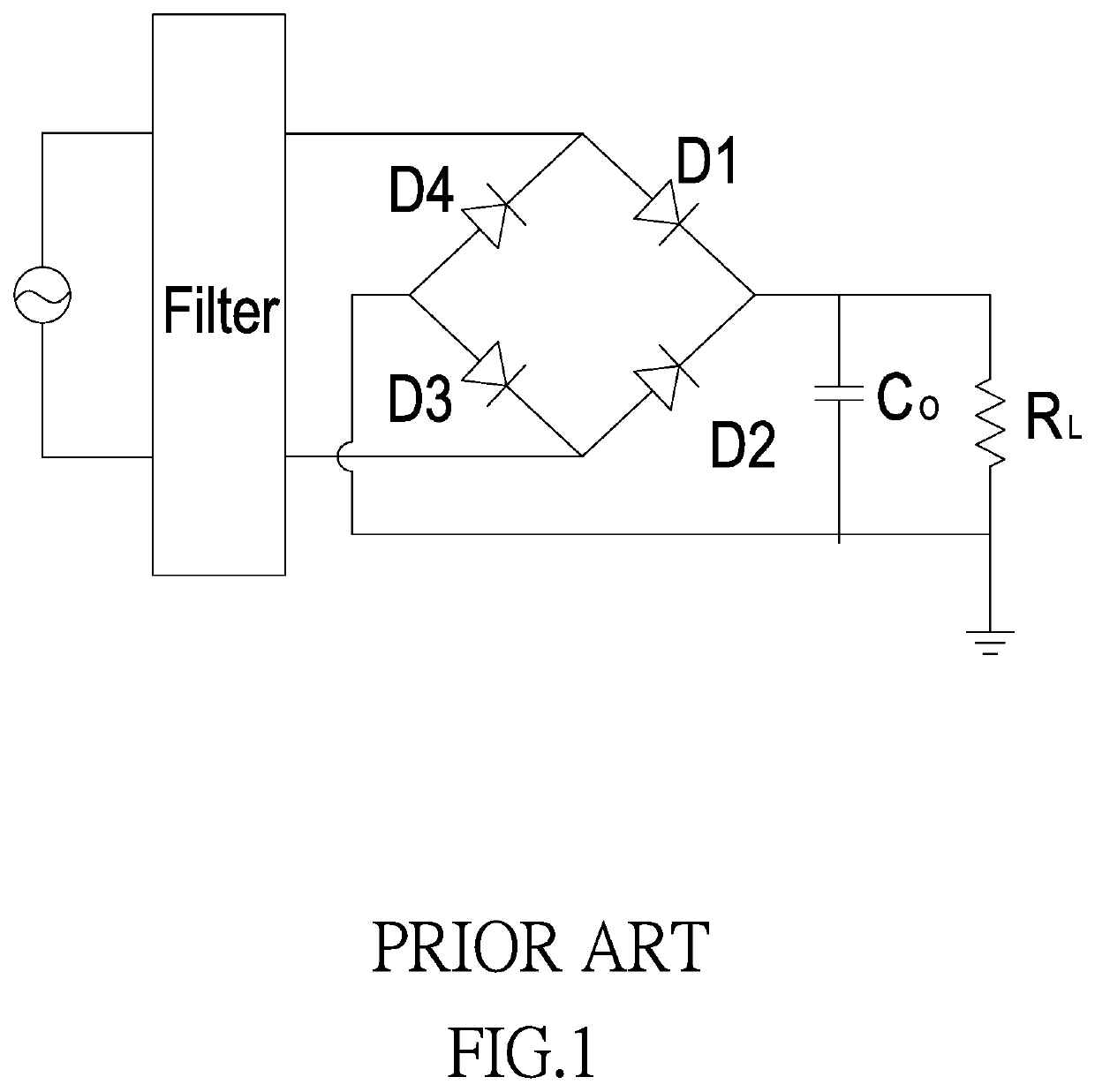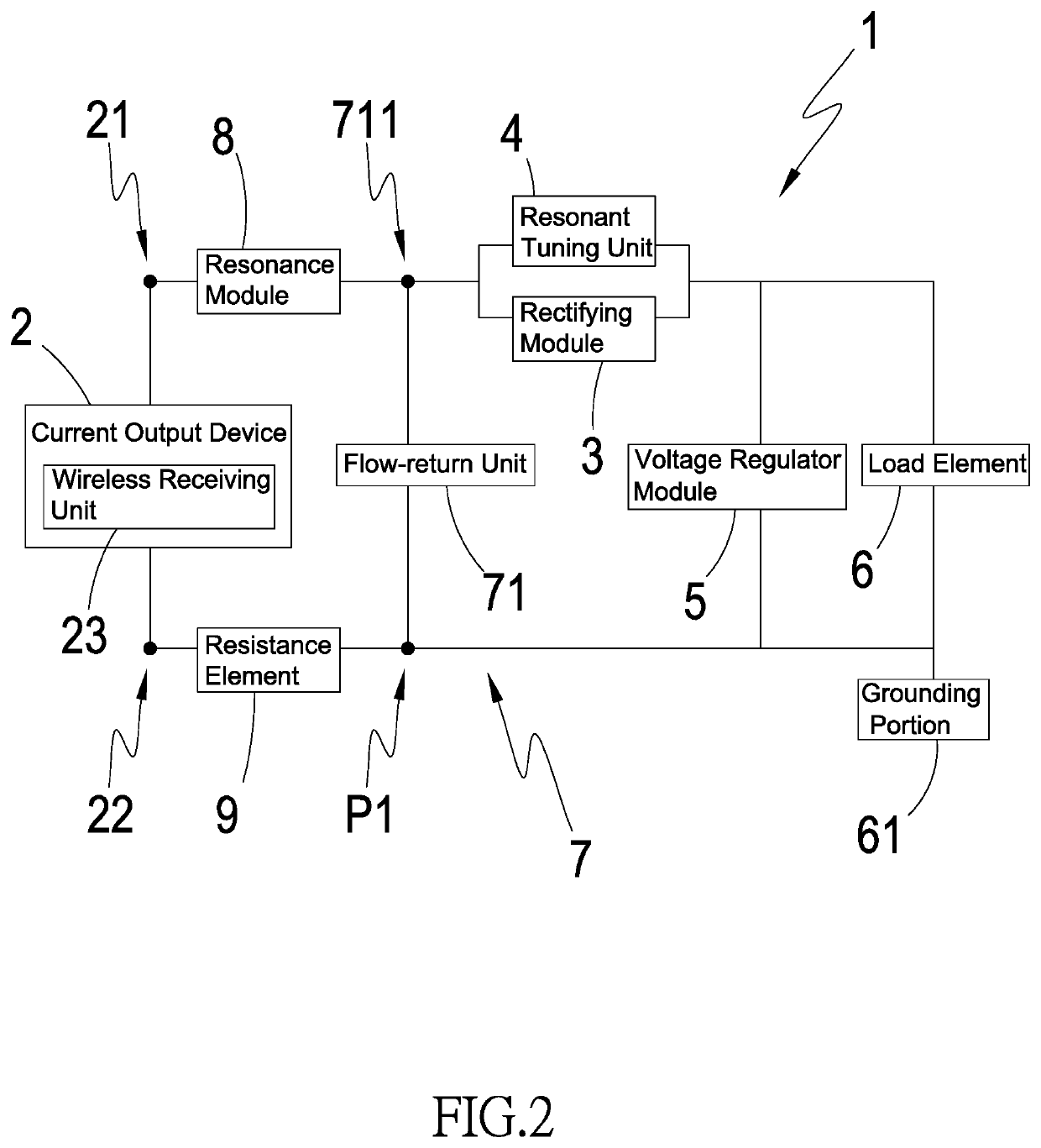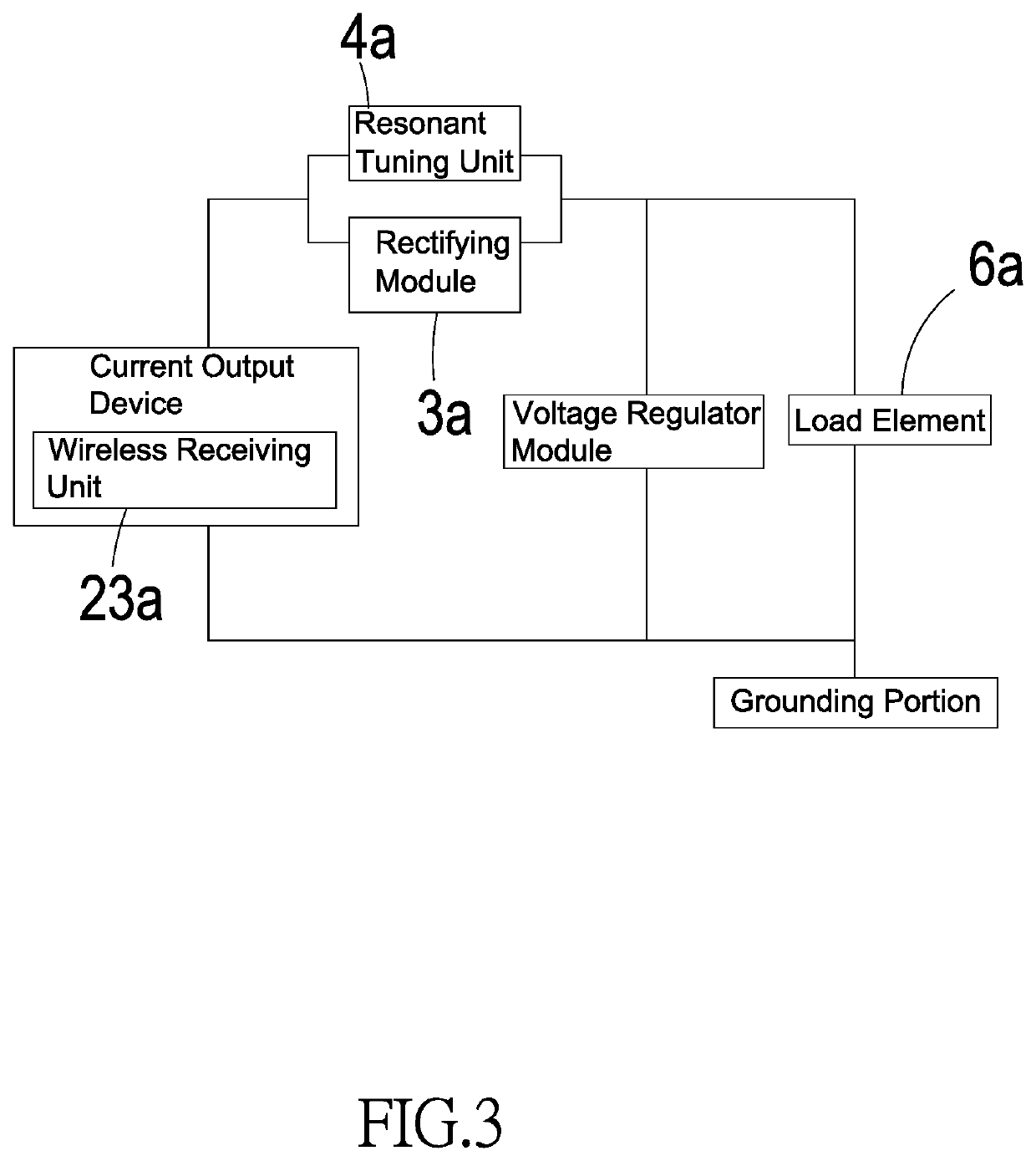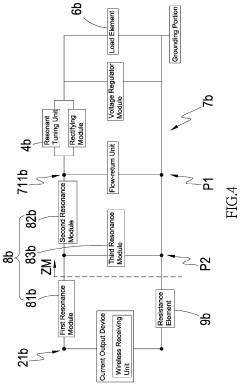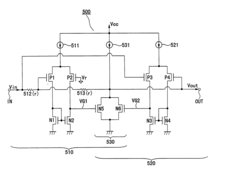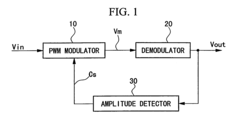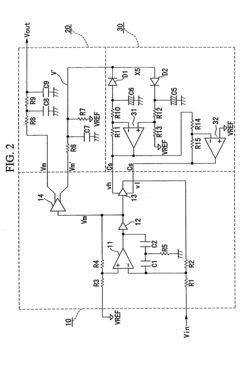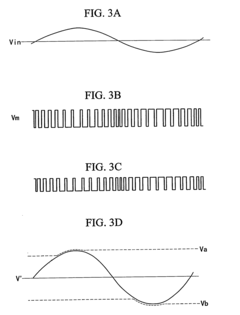Advancements in Half Wave Rectifier Circuit Design
JUL 15, 20259 MIN READ
Generate Your Research Report Instantly with AI Agent
Patsnap Eureka helps you evaluate technical feasibility & market potential.
Half Wave Rectifier Evolution and Objectives
The half wave rectifier circuit has undergone significant evolution since its inception in the early 20th century. Initially developed as a simple means to convert alternating current (AC) to pulsating direct current (DC), this fundamental circuit has played a crucial role in the advancement of electronics and power systems.
The journey of half wave rectifier design began with the invention of the vacuum tube diode by John Ambrose Fleming in 1904. This breakthrough allowed for the first practical implementation of AC to DC conversion. As technology progressed, semiconductor diodes replaced vacuum tubes, leading to more compact and efficient rectifier circuits.
The primary objective of half wave rectifier design has consistently been to improve efficiency and reduce power losses. Early designs faced challenges such as high forward voltage drop across the diode, resulting in significant power dissipation. This led to the development of low-dropout diodes and the exploration of alternative semiconductor materials to minimize these losses.
Another key goal in the evolution of half wave rectifiers has been to enhance the quality of the output DC voltage. The inherent pulsating nature of the half wave rectified output necessitated the development of more sophisticated filtering techniques. This drove innovations in capacitor and inductor designs, as well as the integration of active filtering components to achieve smoother DC output.
The advent of high-frequency applications presented new challenges and objectives for half wave rectifier design. As switching frequencies increased, designers focused on reducing reverse recovery time and minimizing electromagnetic interference (EMI). This led to the development of fast-recovery diodes and advanced circuit topologies to mitigate high-frequency noise.
In recent years, the objectives of half wave rectifier design have expanded to address the growing demand for energy efficiency and miniaturization. This has spurred research into novel materials and fabrication techniques to create rectifiers with lower forward voltage drop and higher current handling capabilities. Additionally, the integration of rectifier circuits into system-on-chip (SoC) designs has become a significant focus, aiming to reduce overall device size and improve performance.
The ongoing evolution of half wave rectifiers also aims to meet the requirements of emerging technologies such as wireless power transfer and energy harvesting systems. These applications demand rectifiers capable of operating efficiently at very low input voltages and handling wide ranges of input power levels.
Looking forward, the objectives for advancing half wave rectifier circuit design include further improvements in efficiency, particularly at low power levels, enhanced thermal management for high-power applications, and increased integration with power management systems. The development of smart rectifiers with adaptive capabilities to optimize performance under varying load conditions is also an area of active research and development.
The journey of half wave rectifier design began with the invention of the vacuum tube diode by John Ambrose Fleming in 1904. This breakthrough allowed for the first practical implementation of AC to DC conversion. As technology progressed, semiconductor diodes replaced vacuum tubes, leading to more compact and efficient rectifier circuits.
The primary objective of half wave rectifier design has consistently been to improve efficiency and reduce power losses. Early designs faced challenges such as high forward voltage drop across the diode, resulting in significant power dissipation. This led to the development of low-dropout diodes and the exploration of alternative semiconductor materials to minimize these losses.
Another key goal in the evolution of half wave rectifiers has been to enhance the quality of the output DC voltage. The inherent pulsating nature of the half wave rectified output necessitated the development of more sophisticated filtering techniques. This drove innovations in capacitor and inductor designs, as well as the integration of active filtering components to achieve smoother DC output.
The advent of high-frequency applications presented new challenges and objectives for half wave rectifier design. As switching frequencies increased, designers focused on reducing reverse recovery time and minimizing electromagnetic interference (EMI). This led to the development of fast-recovery diodes and advanced circuit topologies to mitigate high-frequency noise.
In recent years, the objectives of half wave rectifier design have expanded to address the growing demand for energy efficiency and miniaturization. This has spurred research into novel materials and fabrication techniques to create rectifiers with lower forward voltage drop and higher current handling capabilities. Additionally, the integration of rectifier circuits into system-on-chip (SoC) designs has become a significant focus, aiming to reduce overall device size and improve performance.
The ongoing evolution of half wave rectifiers also aims to meet the requirements of emerging technologies such as wireless power transfer and energy harvesting systems. These applications demand rectifiers capable of operating efficiently at very low input voltages and handling wide ranges of input power levels.
Looking forward, the objectives for advancing half wave rectifier circuit design include further improvements in efficiency, particularly at low power levels, enhanced thermal management for high-power applications, and increased integration with power management systems. The development of smart rectifiers with adaptive capabilities to optimize performance under varying load conditions is also an area of active research and development.
Market Analysis for Improved Rectification
The market for improved rectification technologies, particularly in half-wave rectifier circuit design, has shown significant growth potential in recent years. This surge is primarily driven by the increasing demand for more efficient power conversion systems across various industries. The global power electronics market, which includes rectifier circuits, is projected to reach a substantial market value by 2026, with a compound annual growth rate (CAGR) exceeding 5%.
The demand for enhanced half-wave rectifier designs is particularly strong in sectors such as consumer electronics, automotive, industrial automation, and renewable energy. In the consumer electronics segment, the push for smaller, more energy-efficient devices has led to a growing need for compact and high-performance rectification solutions. The automotive industry, with its rapid shift towards electric vehicles, requires advanced power conversion systems, including improved rectifier circuits, to optimize battery charging and power management.
Industrial automation and robotics represent another significant market for improved rectification technologies. As factories become increasingly automated, the demand for reliable and efficient power conversion components continues to rise. The renewable energy sector, especially solar and wind power generation, also relies heavily on advanced rectification systems to convert and manage the generated power effectively.
Geographically, Asia-Pacific leads the market for rectifier technologies, driven by the region's dominant position in electronics manufacturing and rapid industrialization. North America and Europe follow closely, with their focus on technological innovation and adoption of green energy solutions.
The market trend indicates a shift towards more efficient and compact rectifier designs. There is a growing preference for solutions that offer higher power density, reduced energy losses, and improved thermal management. This trend aligns well with the advancements in half-wave rectifier circuit design, which aim to address these exact requirements.
Another notable market trend is the increasing integration of smart features and digital control in rectification systems. This development is part of the broader Industry 4.0 movement, where power electronics components are expected to offer enhanced monitoring, control, and communication capabilities.
The competitive landscape in this market is characterized by a mix of established electronics giants and innovative startups. Key players are investing heavily in research and development to gain a competitive edge through technological differentiation. There's also a growing emphasis on developing environmentally friendly rectification solutions, in line with global sustainability initiatives.
The demand for enhanced half-wave rectifier designs is particularly strong in sectors such as consumer electronics, automotive, industrial automation, and renewable energy. In the consumer electronics segment, the push for smaller, more energy-efficient devices has led to a growing need for compact and high-performance rectification solutions. The automotive industry, with its rapid shift towards electric vehicles, requires advanced power conversion systems, including improved rectifier circuits, to optimize battery charging and power management.
Industrial automation and robotics represent another significant market for improved rectification technologies. As factories become increasingly automated, the demand for reliable and efficient power conversion components continues to rise. The renewable energy sector, especially solar and wind power generation, also relies heavily on advanced rectification systems to convert and manage the generated power effectively.
Geographically, Asia-Pacific leads the market for rectifier technologies, driven by the region's dominant position in electronics manufacturing and rapid industrialization. North America and Europe follow closely, with their focus on technological innovation and adoption of green energy solutions.
The market trend indicates a shift towards more efficient and compact rectifier designs. There is a growing preference for solutions that offer higher power density, reduced energy losses, and improved thermal management. This trend aligns well with the advancements in half-wave rectifier circuit design, which aim to address these exact requirements.
Another notable market trend is the increasing integration of smart features and digital control in rectification systems. This development is part of the broader Industry 4.0 movement, where power electronics components are expected to offer enhanced monitoring, control, and communication capabilities.
The competitive landscape in this market is characterized by a mix of established electronics giants and innovative startups. Key players are investing heavily in research and development to gain a competitive edge through technological differentiation. There's also a growing emphasis on developing environmentally friendly rectification solutions, in line with global sustainability initiatives.
Current Challenges in Half Wave Rectification
Half wave rectifier circuits, while fundamental in power electronics, face several challenges that limit their efficiency and performance in modern applications. One of the primary issues is the low power output and efficiency compared to full wave rectifiers. This is due to the circuit's inherent nature of utilizing only half of the input waveform, resulting in significant power loss during the negative half-cycle.
Another challenge is the high ripple content in the output voltage. The pulsating DC output from a half wave rectifier contains a substantial AC component, necessitating more extensive filtering to achieve a smooth DC output. This increased filtering requirement often leads to larger, more complex, and costlier circuit designs, which can be problematic in applications where space and cost are critical factors.
The reverse recovery time of diodes used in half wave rectifiers presents another significant challenge. During the transition from forward to reverse bias, diodes require a finite time to stop conducting, leading to switching losses and reduced efficiency. This issue becomes more pronounced at higher frequencies, limiting the circuit's performance in high-speed applications.
Voltage regulation is also a concern in half wave rectifier designs. The output voltage can vary significantly with changes in load or input voltage, making it difficult to maintain a stable DC output without additional regulation circuitry. This challenge is particularly relevant in applications requiring precise voltage control.
Temperature sensitivity is another hurdle in half wave rectifier design. The performance of semiconductor components, particularly diodes, can vary significantly with temperature changes, affecting the circuit's overall reliability and efficiency. This sensitivity can lead to inconsistent output and potential failure in extreme temperature conditions.
The presence of harmonics in the input current waveform is a growing concern, especially in grid-connected applications. Half wave rectifiers draw current only during positive half-cycles, leading to a highly distorted input current waveform. This distortion can cause electromagnetic interference (EMI) and violate power quality standards, necessitating additional filtering and power factor correction circuits.
Lastly, the limited power handling capability of half wave rectifiers poses a challenge in high-power applications. The unidirectional nature of current flow puts significant stress on components during the conduction phase, limiting the circuit's ability to handle high power levels efficiently. This constraint often necessitates the use of more robust components or alternative rectifier topologies in high-power scenarios.
Another challenge is the high ripple content in the output voltage. The pulsating DC output from a half wave rectifier contains a substantial AC component, necessitating more extensive filtering to achieve a smooth DC output. This increased filtering requirement often leads to larger, more complex, and costlier circuit designs, which can be problematic in applications where space and cost are critical factors.
The reverse recovery time of diodes used in half wave rectifiers presents another significant challenge. During the transition from forward to reverse bias, diodes require a finite time to stop conducting, leading to switching losses and reduced efficiency. This issue becomes more pronounced at higher frequencies, limiting the circuit's performance in high-speed applications.
Voltage regulation is also a concern in half wave rectifier designs. The output voltage can vary significantly with changes in load or input voltage, making it difficult to maintain a stable DC output without additional regulation circuitry. This challenge is particularly relevant in applications requiring precise voltage control.
Temperature sensitivity is another hurdle in half wave rectifier design. The performance of semiconductor components, particularly diodes, can vary significantly with temperature changes, affecting the circuit's overall reliability and efficiency. This sensitivity can lead to inconsistent output and potential failure in extreme temperature conditions.
The presence of harmonics in the input current waveform is a growing concern, especially in grid-connected applications. Half wave rectifiers draw current only during positive half-cycles, leading to a highly distorted input current waveform. This distortion can cause electromagnetic interference (EMI) and violate power quality standards, necessitating additional filtering and power factor correction circuits.
Lastly, the limited power handling capability of half wave rectifiers poses a challenge in high-power applications. The unidirectional nature of current flow puts significant stress on components during the conduction phase, limiting the circuit's ability to handle high power levels efficiently. This constraint often necessitates the use of more robust components or alternative rectifier topologies in high-power scenarios.
State-of-the-Art Half Wave Rectifier Designs
01 Basic half-wave rectifier circuit design
A half-wave rectifier circuit typically consists of a diode and a load resistor. The diode allows current to flow in one direction during the positive half-cycle of the AC input, while blocking current flow during the negative half-cycle. This results in a pulsating DC output that can be further smoothed using capacitors or filters.- Basic half-wave rectifier circuit design: A half-wave rectifier circuit typically consists of a diode and a load resistor. The diode allows current to flow in one direction during the positive half-cycle of the AC input, while blocking current flow during the negative half-cycle. This results in a pulsating DC output that can be further smoothed using capacitors or filters.
- Improved efficiency and power factor correction: Advanced half-wave rectifier designs incorporate power factor correction techniques to improve efficiency and reduce harmonic distortion. These circuits may include additional components such as inductors, capacitors, and control ICs to shape the input current waveform and optimize power transfer.
- Integration with voltage regulation: Some half-wave rectifier designs incorporate voltage regulation features to maintain a stable output voltage despite variations in input voltage or load conditions. These circuits may include feedback loops, voltage references, and control elements to adjust the rectifier's operation and ensure consistent output.
- Protection and safety features: Modern half-wave rectifier circuits often include protection and safety features to prevent damage from overcurrent, overvoltage, or reverse polarity conditions. These may involve the use of fuses, transient voltage suppressors, or specialized protection ICs to enhance the circuit's reliability and longevity.
- Miniaturization and integration: Recent developments in half-wave rectifier design focus on miniaturization and integration, aiming to reduce component count and overall circuit size. This may involve the use of surface-mount components, integrated circuit solutions, or novel packaging techniques to create more compact and cost-effective rectifier designs.
02 Improved efficiency and power factor correction
Advanced half-wave rectifier designs incorporate power factor correction techniques to improve efficiency and reduce harmonic distortion. These circuits may include additional components such as inductors, capacitors, and control ICs to shape the input current waveform and optimize power transfer from the source to the load.Expand Specific Solutions03 Integration with voltage regulation and protection
Modern half-wave rectifier circuits often integrate voltage regulation and protection features. These designs may include components like Zener diodes, voltage regulators, or switching elements to maintain a stable output voltage and protect against overvoltage or overcurrent conditions.Expand Specific Solutions04 Application-specific half-wave rectifier designs
Half-wave rectifier circuits are tailored for specific applications such as LED drivers, battery chargers, or power supplies for electronic devices. These designs may incorporate specialized components or control schemes to meet the unique requirements of each application, such as constant current output or multiple output voltages.Expand Specific Solutions05 High-frequency and high-power half-wave rectifier designs
For high-frequency or high-power applications, half-wave rectifier circuits may employ fast-recovery diodes, synchronous rectification, or other advanced techniques to improve efficiency and reduce switching losses. These designs often require careful consideration of component selection, layout, and thermal management to ensure reliable operation.Expand Specific Solutions
Key Players in Rectifier Circuit Industry
The advancements in half wave rectifier circuit design are currently in a mature stage of industry development, with a stable market size and well-established technological foundations. Key players like Semiconductor Energy Laboratory, Huawei Technologies, and Renesas Electronics are driving innovation in this field. The market is characterized by incremental improvements rather than disruptive changes, focusing on enhancing efficiency, reducing power loss, and miniaturization. Companies such as Sanken Electric and Wolfspeed are contributing to the evolution of semiconductor materials and components used in these circuits, while established firms like 3M and ABL IP Holding continue to refine existing designs for specific applications.
Huawei Technologies Co., Ltd.
Technical Solution: Huawei has developed advanced half-wave rectifier circuits using silicon carbide (SiC) technology. Their design incorporates a high-frequency switching mechanism that operates at frequencies up to 100 kHz, significantly reducing the size of passive components[1]. The circuit employs a novel gate driver design that minimizes switching losses and improves overall efficiency by up to 98%[3]. Huawei's rectifier also features an intelligent thermal management system that allows for operation in high-temperature environments up to 175°C, making it suitable for various industrial applications[5].
Strengths: High efficiency, compact design, and excellent thermal performance. Weaknesses: Potentially higher cost due to SiC technology and complex control systems.
Renesas Electronics Corp.
Technical Solution: Renesas has introduced a half-wave rectifier design that integrates advanced power management ICs with their proprietary silicon-on-insulator (SOI) technology. This combination allows for ultra-low power consumption, with standby current as low as 100 nA[2]. The circuit incorporates a dynamic voltage scaling feature that adjusts the output voltage based on load conditions, optimizing efficiency across a wide range of operating scenarios[4]. Renesas' design also includes built-in protection features such as over-voltage, over-current, and thermal shutdown, enhancing reliability in critical applications[6].
Strengths: Extremely low power consumption, adaptive voltage scaling, and robust protection features. Weaknesses: May have limitations in high-power applications due to focus on low-power design.
Innovative Patents in Rectification Technology
High-frequency half-wave rectifier system of low-harmonicity and high-efficiency
PatentInactiveUS10594205B2
Innovation
- A high-frequency half-wave rectifier system with a simplified structure and reduced electronic components, utilizing a resonant tuning unit and voltage regulator module to control the duty cycle and capacitance, thereby reducing harmonic content and electromagnetic interference, and improving conversion efficiency.
Device for amplitude adjustment and rectification made with MOS technology
PatentInactiveUS20050185433A1
Innovation
- The development of amplitude adjustment devices using PWM modulators, demodulators, and amplitude detectors with field-effect transistors, and full-wave rectifiers configured with inversion amplifiers and output sections, allowing for continuous gain variation and integration as ICs without external diodes.
Efficiency and Power Loss Considerations
Efficiency and power loss considerations are crucial aspects in the advancement of half wave rectifier circuit design. These factors directly impact the overall performance and practicality of the rectifier in various applications. One of the primary concerns in half wave rectifier circuits is the relatively low efficiency compared to full wave rectifiers. This is due to the fact that only one half of the AC input waveform is utilized, resulting in a significant portion of the input power being wasted.
To address this issue, researchers have focused on developing innovative circuit topologies and component selections to minimize power losses. One approach involves the use of high-efficiency diodes with low forward voltage drops, such as Schottky diodes. These diodes reduce conduction losses and improve overall efficiency, particularly in low-voltage applications. Additionally, the implementation of synchronous rectification techniques, where MOSFETs replace traditional diodes, has shown promising results in reducing power losses and increasing efficiency.
Another area of focus is the reduction of reverse recovery losses in the rectifier diode. As the diode transitions from the conducting to the non-conducting state, a brief period of reverse current flow occurs, leading to power dissipation. Advanced diode technologies, such as ultra-fast recovery diodes and soft recovery diodes, have been developed to minimize these losses and improve overall circuit efficiency.
The design of the transformer or inductor used in the rectifier circuit also plays a crucial role in efficiency optimization. Careful consideration of core materials, winding techniques, and air gap design can significantly reduce core losses and improve power transfer efficiency. Furthermore, the implementation of resonant circuit topologies has shown potential in reducing switching losses and improving overall system efficiency.
Power factor correction (PFC) techniques have also been integrated into half wave rectifier designs to address efficiency concerns. By improving the power factor, these circuits reduce the harmonic content of the input current, leading to more efficient power utilization and compliance with regulatory standards. Advanced PFC techniques, such as active PFC and interleaved PFC, have demonstrated significant improvements in efficiency and power quality.
Thermal management is another critical aspect of efficiency optimization in half wave rectifier circuits. Proper heat dissipation techniques, including the use of heat sinks, thermal interface materials, and optimized PCB layouts, help minimize temperature-related losses and improve overall system reliability. Additionally, the implementation of smart cooling solutions, such as variable-speed fans or thermoelectric coolers, can further enhance efficiency by dynamically adapting to changing thermal conditions.
As the demand for high-efficiency power conversion continues to grow, ongoing research in half wave rectifier circuit design focuses on pushing the boundaries of efficiency and minimizing power losses. Advanced materials, such as wide-bandgap semiconductors like silicon carbide (SiC) and gallium nitride (GaN), are being explored for their potential to operate at higher frequencies and temperatures, further improving efficiency and power density in rectifier circuits.
To address this issue, researchers have focused on developing innovative circuit topologies and component selections to minimize power losses. One approach involves the use of high-efficiency diodes with low forward voltage drops, such as Schottky diodes. These diodes reduce conduction losses and improve overall efficiency, particularly in low-voltage applications. Additionally, the implementation of synchronous rectification techniques, where MOSFETs replace traditional diodes, has shown promising results in reducing power losses and increasing efficiency.
Another area of focus is the reduction of reverse recovery losses in the rectifier diode. As the diode transitions from the conducting to the non-conducting state, a brief period of reverse current flow occurs, leading to power dissipation. Advanced diode technologies, such as ultra-fast recovery diodes and soft recovery diodes, have been developed to minimize these losses and improve overall circuit efficiency.
The design of the transformer or inductor used in the rectifier circuit also plays a crucial role in efficiency optimization. Careful consideration of core materials, winding techniques, and air gap design can significantly reduce core losses and improve power transfer efficiency. Furthermore, the implementation of resonant circuit topologies has shown potential in reducing switching losses and improving overall system efficiency.
Power factor correction (PFC) techniques have also been integrated into half wave rectifier designs to address efficiency concerns. By improving the power factor, these circuits reduce the harmonic content of the input current, leading to more efficient power utilization and compliance with regulatory standards. Advanced PFC techniques, such as active PFC and interleaved PFC, have demonstrated significant improvements in efficiency and power quality.
Thermal management is another critical aspect of efficiency optimization in half wave rectifier circuits. Proper heat dissipation techniques, including the use of heat sinks, thermal interface materials, and optimized PCB layouts, help minimize temperature-related losses and improve overall system reliability. Additionally, the implementation of smart cooling solutions, such as variable-speed fans or thermoelectric coolers, can further enhance efficiency by dynamically adapting to changing thermal conditions.
As the demand for high-efficiency power conversion continues to grow, ongoing research in half wave rectifier circuit design focuses on pushing the boundaries of efficiency and minimizing power losses. Advanced materials, such as wide-bandgap semiconductors like silicon carbide (SiC) and gallium nitride (GaN), are being explored for their potential to operate at higher frequencies and temperatures, further improving efficiency and power density in rectifier circuits.
Applications and Integration Strategies
Half wave rectifier circuits have found widespread applications across various industries, with their integration strategies evolving to meet the demands of modern electronic systems. In power supply units, these circuits are extensively used for converting alternating current (AC) to pulsating direct current (DC), making them essential components in many household appliances and industrial equipment. The simplicity and cost-effectiveness of half wave rectifiers make them particularly suitable for low-power applications where efficiency is not a primary concern.
In the telecommunications sector, half wave rectifiers play a crucial role in signal processing and modulation. They are employed in amplitude modulation (AM) detectors, where they extract the audio signal from the modulated carrier wave. This application has been fundamental in the development of radio receivers and continues to be relevant in modern communication systems.
The automotive industry has also embraced half wave rectifier circuits, particularly in voltage regulation systems for alternators. These circuits help maintain a stable voltage output from the alternator, ensuring proper charging of the vehicle's battery and powering various electrical components. As vehicles become increasingly electrified, the integration of advanced half wave rectifier designs becomes more critical for efficient power management.
In renewable energy systems, half wave rectifiers find applications in solar panel installations and wind turbines. They are used to convert the generated AC power into DC, which can then be stored in batteries or fed into inverters for grid integration. The ongoing advancements in rectifier design aim to improve the efficiency of these energy conversion processes, contributing to the overall performance of renewable energy systems.
The integration of half wave rectifiers in microelectronics and integrated circuits (ICs) has opened up new possibilities for miniaturization and power efficiency. Modern IC designs incorporate optimized half wave rectifier circuits for on-chip power management, enabling the development of more compact and energy-efficient electronic devices. This integration strategy is particularly valuable in the design of low-power sensors, wearable devices, and Internet of Things (IoT) applications.
As the demand for more efficient and compact electronic systems continues to grow, the integration strategies for half wave rectifiers are evolving. Researchers and engineers are exploring novel materials and circuit topologies to enhance the performance of these fundamental components. The focus is on reducing power losses, improving voltage regulation, and increasing the overall efficiency of rectification processes. These advancements are paving the way for the next generation of electronic devices and power systems, where half wave rectifiers will continue to play a vital role in energy conversion and signal processing applications.
In the telecommunications sector, half wave rectifiers play a crucial role in signal processing and modulation. They are employed in amplitude modulation (AM) detectors, where they extract the audio signal from the modulated carrier wave. This application has been fundamental in the development of radio receivers and continues to be relevant in modern communication systems.
The automotive industry has also embraced half wave rectifier circuits, particularly in voltage regulation systems for alternators. These circuits help maintain a stable voltage output from the alternator, ensuring proper charging of the vehicle's battery and powering various electrical components. As vehicles become increasingly electrified, the integration of advanced half wave rectifier designs becomes more critical for efficient power management.
In renewable energy systems, half wave rectifiers find applications in solar panel installations and wind turbines. They are used to convert the generated AC power into DC, which can then be stored in batteries or fed into inverters for grid integration. The ongoing advancements in rectifier design aim to improve the efficiency of these energy conversion processes, contributing to the overall performance of renewable energy systems.
The integration of half wave rectifiers in microelectronics and integrated circuits (ICs) has opened up new possibilities for miniaturization and power efficiency. Modern IC designs incorporate optimized half wave rectifier circuits for on-chip power management, enabling the development of more compact and energy-efficient electronic devices. This integration strategy is particularly valuable in the design of low-power sensors, wearable devices, and Internet of Things (IoT) applications.
As the demand for more efficient and compact electronic systems continues to grow, the integration strategies for half wave rectifiers are evolving. Researchers and engineers are exploring novel materials and circuit topologies to enhance the performance of these fundamental components. The focus is on reducing power losses, improving voltage regulation, and increasing the overall efficiency of rectification processes. These advancements are paving the way for the next generation of electronic devices and power systems, where half wave rectifiers will continue to play a vital role in energy conversion and signal processing applications.
Unlock deeper insights with Patsnap Eureka Quick Research — get a full tech report to explore trends and direct your research. Try now!
Generate Your Research Report Instantly with AI Agent
Supercharge your innovation with Patsnap Eureka AI Agent Platform!
